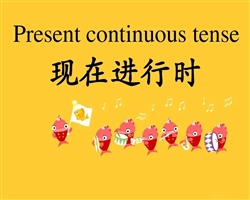涉及状语从句的几种特定时态
涉及状语从句的几种特定时态
1. “主将从现”原则
即若主句为一般将来时,时间和条件状语从句通常要用一般现在时表示将来,而不能直接使用将来时态。如:www.34en.com
I’ll give her the telex when she comes. 她来时把电传交给她。
I’ll return the book as soon as I have read it. 这书一看完我就送还。
He’ll have four years at university after he leaves school. 他中学毕业后要上四年大学。
2. since与完成时
since 引导时间状语从句时,其主句通常要用现在完成时,有时也用现在完成进行时。如:
She has had another baby since I saw her last. 从上次我见到她以来,她又生了一个孩子。
He has grown an inch since I saw him. 我上次见到他以后他已长高了一英寸。
注:当主句为“It + be + 一段时间”时,则通常用一般现在时代替现在完成时。如:
It’s more than three years now since I saw her last. 我们已有三年多没见面了。
3. 特定句式的时态
由no sooner. . . than, hardly [scarcely]…when引出的时间状语从句,其主句通常用过去完成时,从句通常用一般过去时。如:
Hardly had he arrived when she started complaining. 他刚到她就抱怨起来。
No sooner had he gone to sleep than the telephone rang. 他刚睡着电话铃就响了。
We had no sooner set out than a thunderstorm broke. 我们刚出发就下起一阵雷暴。
No sooner had she agreed to marry him than she started to have terrible doubts. 她刚同意嫁给他她就开始产生可怕的疑虑。
- 关键字:
- 上一篇: 英语基础语法:过去完成时
- 下一篇:一般现在时表将来的六种用法
友友评论:
内容相关随机推荐:
暂无相关信息!
- 相关链接:
-
资源说明:
英语语法网英语语法网-时态语态-《涉及状语从句的几种特定时态》
 。
。




